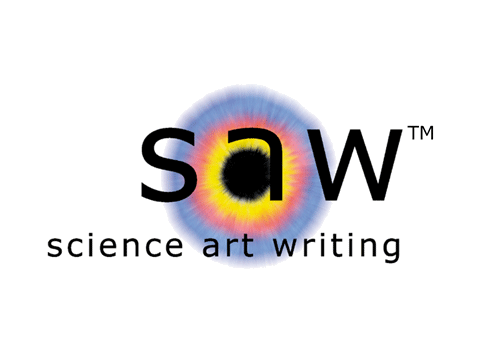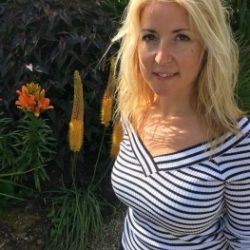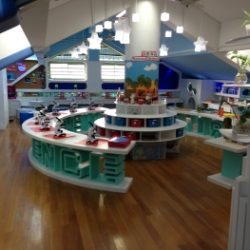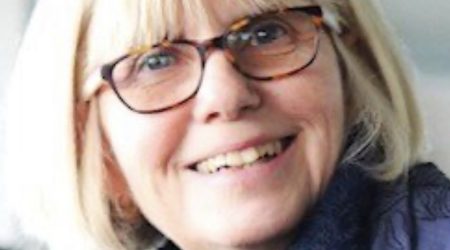Introducing the SAW Trust

The SAW Trust is a science education charity developed in 2005 by Professor Anne Osbourn.
SAW takes a fresh approach to science education, using intriguing images to initiate exploration of scientific research through activities in practical science, creative writing and visual arts, aimed at as wide an audience as possible.
The SAW Trust was established in 2006. I joined that year, initially as a volunteer, combining it with working as a researcher here at the John Innes Centre, before finishing my research and joining the charity full-time in 2011.
I worked with Anne and other volunteers on the development of SAW during my PhD and postdoctoral research projects. From this experimental phase a flexible programme that invited people from across society to explore and be inspired by science emerged.
I’d never previously considered a career in science communication, but the time I dedicated to SAW felt like the most natural thing to do. I loved science and my research and I wanted others to share that passion.As SAW was becoming increasingly popular we were beginning to find the demands of running it as an addition to our day jobs, a bit of a strain and it soon reached a tipping point; it could continue to exist in the hands of volunteers, but we felt it had the potential to grow in new directions, inviting more people to connect with science.
At school I enjoyed the arts and languages and as much as I really enjoyed practical science, I’d found communicating my understanding rather challenging. What I had witnessed SAW provide in schools was a way for children who favoured creative writing and art to explore and participate in science and express their understanding in diverse ways. I wished I’d had this opportunity when I was at school and this is why I love working for the SAW Trust. I also love being able to help scientists make their research accessible to wide audiences and share their passion.
When teachers are surprised by the work generated by children who do not feel they are good at science or you see people being inspired by science and wanting to follow this new interest after a SAW project you really feel that you are making a difference.
How it works
A typical SAW project for children involves taking a team of one or more scientists, an artist and a writer into a school, where we spend the entire day with one class.
The team work together in a partnership to highlight the creative and collaborative nature of scientific research and run a science session in the morning. They then take the scientific theme they’ve looked at in the morning, supported by a set of high quality science images, as a springboard for the poetry and art sessions that take place later. Our workshops for adults follow the same format.
Scientific images, are an important part of how SAW works, providing a link through the sessions.
There is so much exceptional science being done across the Norwich Research Park, nearly every laboratory you go in holds fantastic images from their work and they often don’t realise how interesting they could be to somebody who doesn’t know what the image depicts.
To help showcase them, we set-up the Norwich Research Park image library, in 2015 which is fast becoming a collection of iconic images that are completely open access to enable people to explore the science taking place across the park.
The power of images to intrigue is also used by our Communications and Engagement team in their popular social media ‘Guess the Image’ game.
With this in mind, we ask the scientists we work with to collect some of their favourites. We then use big colour versions of these images in schools to intrigue and inspire children’s creativity.
SAW around the world
Over the last 13 years we have run projects with mixed audiences at varied locations including in libraries, schools and at science and music festivals, both in the UK and around the globe.
USA
During the development of SAW, we were very fortunate to have links with Professor Louise Swiniarski, an expert in early years education from Boston in the USA.
Louise visited a few SAW projects which we were running in the UK and saw how the approach enabled even very young children to take ownership of their learning.
Inspired, Louise began including SAW in her lectures for trainee teachers back in the US.
SAW quickly blossomed as the new teachers took up their first positions in schools and began using SAW as part of their regular lessons.
China
In 2012 we were invited to the Xuhui district of Shanghai to demonstrate the SAW methodology at a launch event at Wunan Kindergarten, where we delivered a demo lesson with some Chinese children in front of a large audience of teachers and education specialists, before running a workshop for teachers.
When we returned in 2014, we were delighted to find it had been supported by the Chinese education bureau, enabling further teacher training and Wunan to become a SAW Trust hub school.
In under 18 months since we introduced the SAW concept, over 1,000 Chinese children had participated in SAW activities.
We have continued to develop SAW in China with regular exchange visits to our hub school that has a purpose-built SAW classroom and invites teachers from across the region to come and learn the SAW approach, including one teacher who recently won a top national award in China for innovation with the development of a SAW lesson.
Brazil
We are currently working with Professor Ray Dixon’s group, who have presented SAW Trust work to their collaborators in Brazil. The group are excited about the potential of the SAW concept and have already had interest from their local schools to give it a try.
We plan to visit Brazil shortly to run some training sessions.
Get involved
For scientists that would like to work with us we encourage them to write SAW activities into their research grants as part of their public engagement plan and we can work with them to create customised text to include in such funding applications. SAW is based at the John Innes Centre, but we work with scientists from any field or institute who want to explore a cross-disciplinary approach to science engagement, if you want to be involved get in touch.
For schools that want to get involved, there are a couple of options; attend at training workshop, or host a SAW team in your school.
Training workshops
These sessions enable teachers to run in-house projects, which are particularly popular with Primary Schools, as staff teach across the curriculum.
A range of SAW lesson plans have also been developed to aid teachers who wish to do this and once they have experienced the process they can use the model with a range of science topics at the core.
We are also available for bookings to visit schools to run SAW teacher training (INSET) days for all staff.
Training sessions are advertised on our website, in our newsletter and on our twitter feed.
Host a SAW Trust team in your school
Schools can book projects at any time and on any science topic.
A standard project costs the school around £550, which covers the costs of hiring the (excellent) freelance writers and artists we work with. The scientist gets involved as part of their day-to-day outreach activity, which most grants and funding stipulates as a requirement.
We can run multiple projects in a school at the same time, but work on the basis that each project can accommodate a maximum of 30 children at a time.
Alternatively, we have some projects that are free for schools throughout the year as funding has been secured by the scientists on their research grants.
These one-day projects work to the same format as previously described with a professional artist and writer joining the team but have the scientist’s actual research topic as the theme. We try to share these projects around among the schools that have already engaged with SAW through the other routes.
We are keen to set up a hub school locally to refine what we do and integrate it more effectively with the UK curriculum, making it easier for teachers to include more science in schools through this cross-disciplinary methodology.
As such, we’ve recently partnered with Norfolk County Council’s International Schools Programme, which enabled us to take a group of Norfolk teachers to China, so they could see how SAW is being rolled out across schools and how they use it.
On seeing the positive effect the SAW Trust was having in the way science was being taught to, and engaged with by, children, the team asked; “Why aren’t we doing this back home?”
Our job now is to use this support to do just that.
To make a donation or for more information, visit www.sawtrust.org



